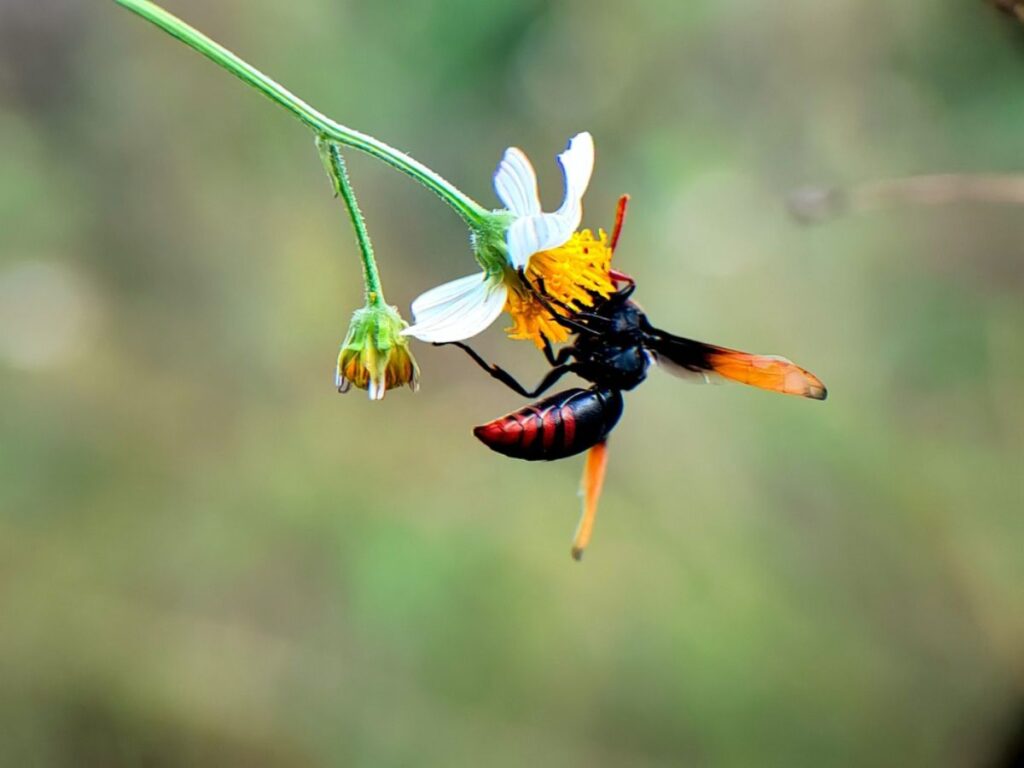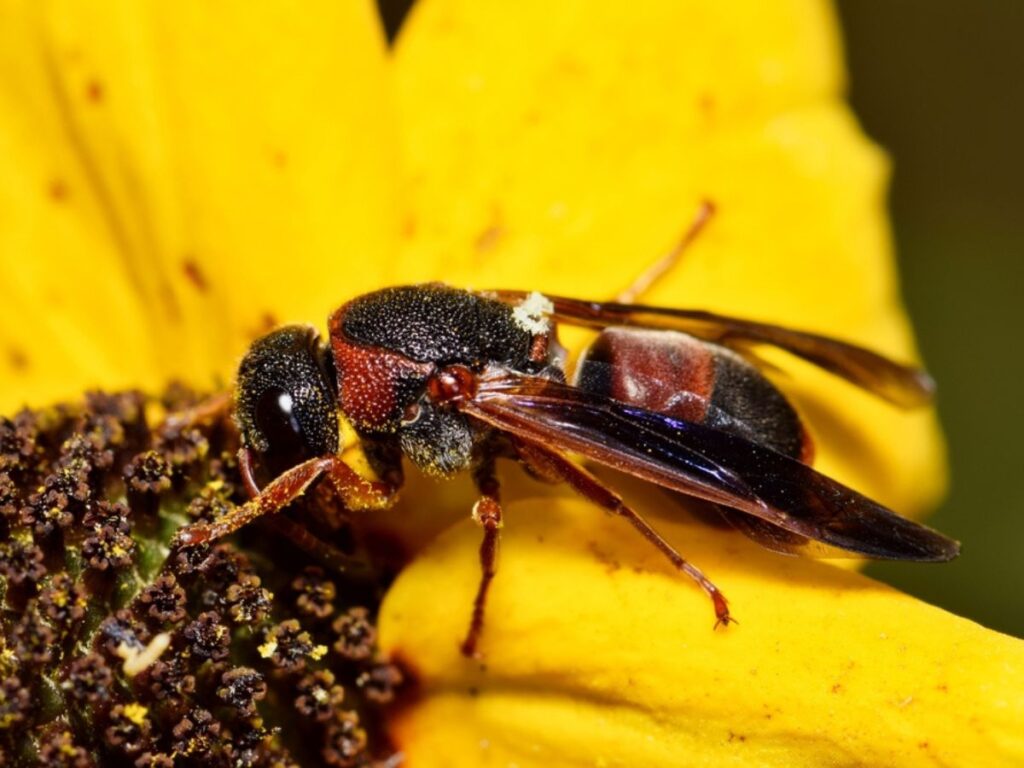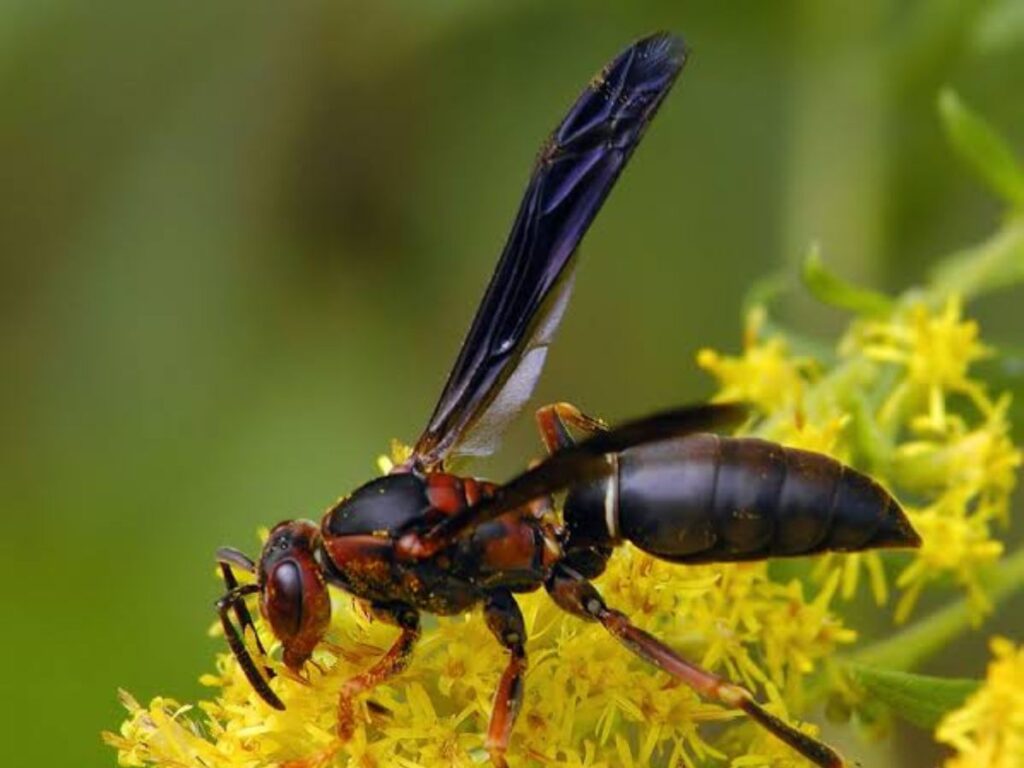Red and black wasps are common in many regions, especially during warmer months. Their distinct coloration and often aggressive demeanor can be both fascinating and alarming. Whether you're a homeowner looking to keep your family safe or just curious about these insects, understanding their behavior, dangers, and how to deal with them is essential.

Red and black wasps are part of the large family known as Vespidae, which includes species such as paper wasps, hornets, and yellow jackets. They are easily identifiable by their striking color patterns, typically featuring a combination of red, black, and sometimes yellow. One of the most common types of red and black wasps is the paper wasp (Polistes spp.), known for its slim body, long legs, and tendency to build paper-like nests.
These wasps are widespread across North America, Europe, and other temperate regions. They thrive in both urban and rural areas, often making their homes in tree branches, eaves of houses, or even hidden corners in sheds and garages.
While they may appear similar to hornets or yellowjackets, red and black wasps are generally more giant and less aggressive unless provoked. Unlike bees, which have a more rounded, furry appearance, wasps are more streamlined and have less hair on their bodies. This makes them efficient hunters and scavengers, feeding on nectar, small insects, and even dead animals.
Red and black wasps are social insects living in colonies ranging from a few dozen to several hundred individuals. These colonies typically consist of a single queen, responsible for laying eggs, and worker wasps, who gather food, build the nest, and protect the colony.
Nests are usually constructed in sheltered areas, such as the undersides of roofs, branches, or inside abandoned structures. Red and black wasps are particularly drawn to human-made structures because they provide ideal protection from the elements. Their nests are made from chewed wood fibers mixed with saliva, creating a papery material that gives the paper wasp its name.
One of the most notable aspects of these wasps is their defensive behavior. While they aren’t inherently aggressive, they will fiercely protect their nests if threatened. Be cautious if you see a wasp nest near your home, as disturbing it can lead to painful stings.
During the spring and summer, red and black wasps are most active as they work to expand their colonies and gather food. The colony’s activity declines by late summer or early fall, and the wasps become less aggressive. The queen and male wasps will die off as the temperature drops, while young queens seek shelter to survive the winter and start new colonies the following spring.

Red and black wasps can pose a severe threat if provoked, especially to those allergic to wasp stings. When a wasp stings, it infiltrates poison into the skin, generating pain, swelling, and redness. For most people, a sting is just a painful nuisance, but for those with allergies, it can be life-threatening.
Sting Reactions: For individuals with wasp allergies, a sting can trigger anaphylaxis, a severe reaction that requires immediate medical attention. Symptoms of anaphylaxis include problem breathing, swelling of the face and throat, dizziness, and a rapid pulse. If you or someone you know experiences these symptoms after a sting, seek emergency medical help immediately.
Non-Allergic Reactions: Even without an allergy, wasp stings can still be painful. The sting site may become swollen, red, and itchy. In most cases, applying ice and taking antihistamines can help reduce swelling and discomfort. Over-the-counter ache relievers like ibuprofen or acetaminophen can also aid in alleviating pain.
Multiple Stings: Unlike bees, which can only sting once, red and black wasps can prick numerous times. This is because they do not lose their stingers after attacking, making them especially dangerous if they feel threatened. If you encounter a nest swarmed by wasps, cover your face and move away from the area as quickly and calmly as possible.
To minimize the risk of being stung, keep a safe distance from wasp nests and avoid sudden movements that could provoke the insects. If you notice a wasp near you, remain calm and still, as swatting or rapid movements may cause the wasp to become defensive.

Locating a wasp nest near your home can be alarming, mainly if it’s located in a high-traffic area like a porch or window frame. Fortunately, there are steps you can take to safely deal with an infestation without putting yourself at risk.
Assess the Situation:
The first step in dealing with a wasp nest is determining its size and location. If the nest is small and located in an area with little risk, such as a distant tree, you may leave it alone. Wasps are important in controlling pest populations, as they feed on insects like caterpillars and flies.
However, if the nest is in a high-traffic area or near your home, it may need removal to avoid stings. Large nests or nests located in hard-to-reach places are best left to professionals.
DIY Nest Removal:
If you’re dealing with a small nest and feel confident removing it, you can do so with caution. The best time to remove a wasp nest is in the early morning or late evening when the wasps are less occupied. Use defensive clothing, including long sleeves, pants, gloves, and a face mask to decrease the risk of stings.
Use a commercial wasp spray, which can be found at most hardware stores. Stand securely and spray the nest according to the product’s instructions. Once the wasps have been eliminated, you can knock down the nest using a broomstick or other long tool. Be sure to dispose of the nest carefully in a sealed plastic bag.
Professional Help:
If you have enormous nests or are unsure about dealing with the wasps yourself, it’s best to contact a pest control professional. They have the devices and expertise to safely remove nests without putting anyone at risk.
Prevention Tips:
To prevent wasps from building nests near your home, regularly check for early signs of nest building, especially during the spring. Close any cracks or gaps in your home’s exterior, and remove food sources that may draw wasps, such as available trash cans or exposed pet food. Hanging decoy wasp nests can also deter wasps from nesting in your area, as they are territorial and will avoid places where they believe other colonies are already established.
By understanding the habits and behaviors of red and black wasps, you can take the necessary precautions to stay safe and keep your home free from these potentially dangerous insects. Whether you handle a wasp infestation yourself or call in the professionals, the key is to act carefully and decisively to protect yourself and your family.
Red and black wasps can be dangerous, especially if they feel their nest is threatened. While they aren't inherently aggressive, their stings can be painful and potentially life-threatening to those with allergies.
Red and black wasps are more slender and have longer legs than hornets. Hornets are generally bulkier, and many species have a more prominent black-and-white coloration. In contrast, red and black wasps feature reddish tones.
If you find a nest inside your home, contact a professional pest control service. Trying to extract the nest yourself can cause the wasps and increase the risk of stings.
Yes, unlike bees, red and black wasps can sting multiple times. Their stingers are not barbed, which allows them to sting repeatedly without harm to themselves.
To prevent wasps from nesting near your home, inspect potential nesting sites regularly, seal cracks, and remove food sources like open garbage or fallen fruit. Decoy nests and insect repellents can also help deter them from settling in your area.
Professional pest control that delivers exceptional value to your home or business.
© 2024 Pest Free Red Wing Company. All rights reserved.